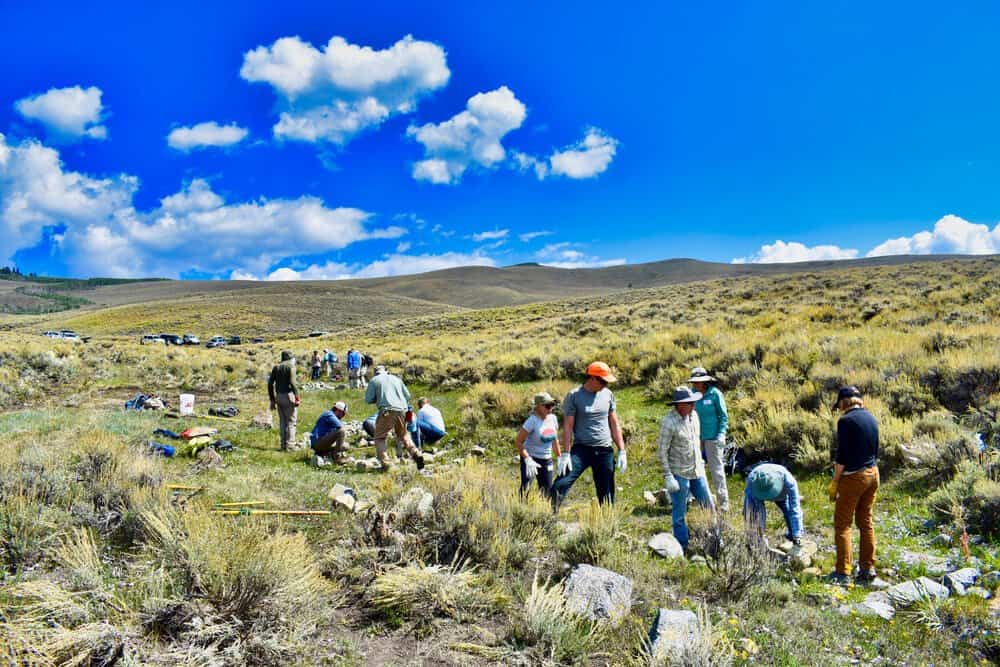By Courtney King
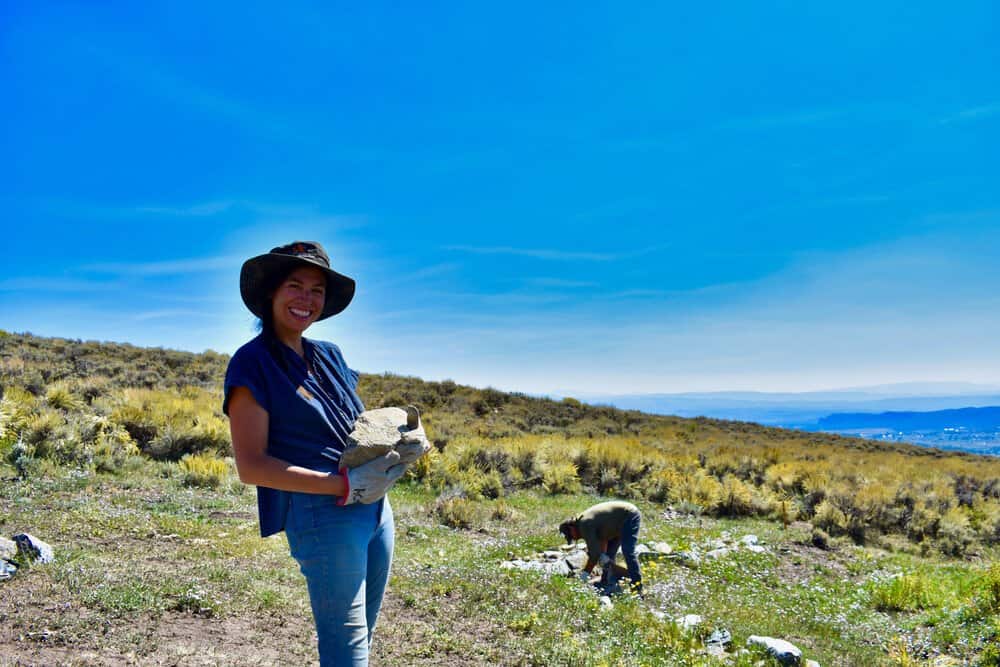
Transplants to Gunnison studying or working in the environmental sciences can’t call the valley home for very long without learning about a few key, interrelated subjects — the beloved Gunnison sage-grouse, cheatgrass, and wet meadows.
Having hardly ever seen (or smelled) sagebrush, I soon found myself learning and volunteering at events like Gunnison’s annual Public Lands Day, where eager volunteers often work to restore the health of these vital yet fragile ecosystems.
While events like these often happen every fall, for the professors and natural resource managers organizing these educational and work events, the seeds for these projects are sown back in the spring.
In some cases, those seeds are literal, as volunteers and resource managers work hand in hand to collect seeds from native wildflowers, so they may be propagated and planted as part of ecological restoration efforts.
In the case of cheatgrass, considered a “noxious weed” in much of the west because of the plant’s tendency to outcompete ecologically beneficial plants — the aim is to remove the target plants before they release their seeds and spread further.
Back in 2019, Mayor Gelwicks named May 18 “Eradicate Cheatgrass Day” at a dual-purpose event that served as both a celebration of Colorado’s Public Lands Day and the launch of Western’s Center for Public Lands.
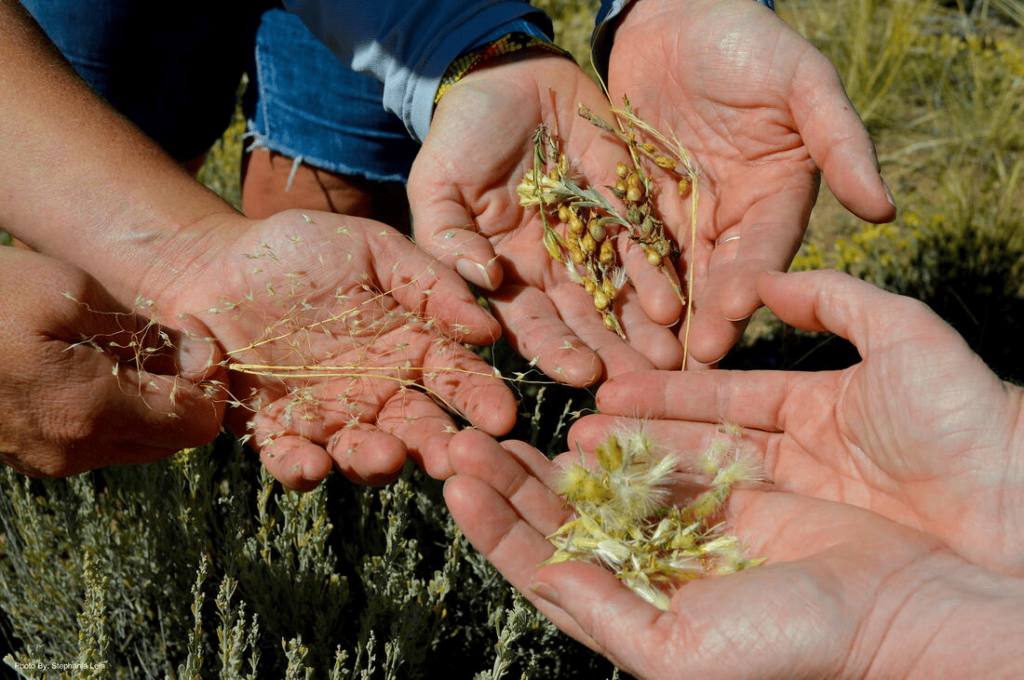
The wide world of wet meadow restoration
In the early summer, many local land managers turn their attention to restoring wet meadows, a type of wetland that is relatively rare in the southwest.
Wet meadows provide important ecosystem benefits including serving as wildlife habitat for species like the imperiled Gunnison sage-grouse, whose young require the usage of wet meadows to attain the forage they need to survive.
These meadows similarly provide important food and cover for other bird species, insects — including valuable pollinators, mule deer, elk, and even domestic livestock.
Sadly, these precious ecosystems have been some of the most impacted by humans in the American southwest, prompting restoration efforts over the past two decades.
Much of this restoration work has involved what are often deemed nature- or process-based solutions, which usually involve building natural structures.
Those structures include one rock dams — hand-built mini-dams forged out of multiple rocks but constructed to the height of a single rock; Zeedyk-style rock structures, named after a champion for wet meadow and riparian restoration; and beaver dam analogs, which, as their name implies, mimic the role of beaver dams in riparian areas, damming water and forcing its path to widen.
These “treatments” may vary in size and shape but are all intended to restore the hydrologic and ecological function of streams by slowing down and spreading out water, fighting erosion worsened by human activities and restoring more natural flow patterns.
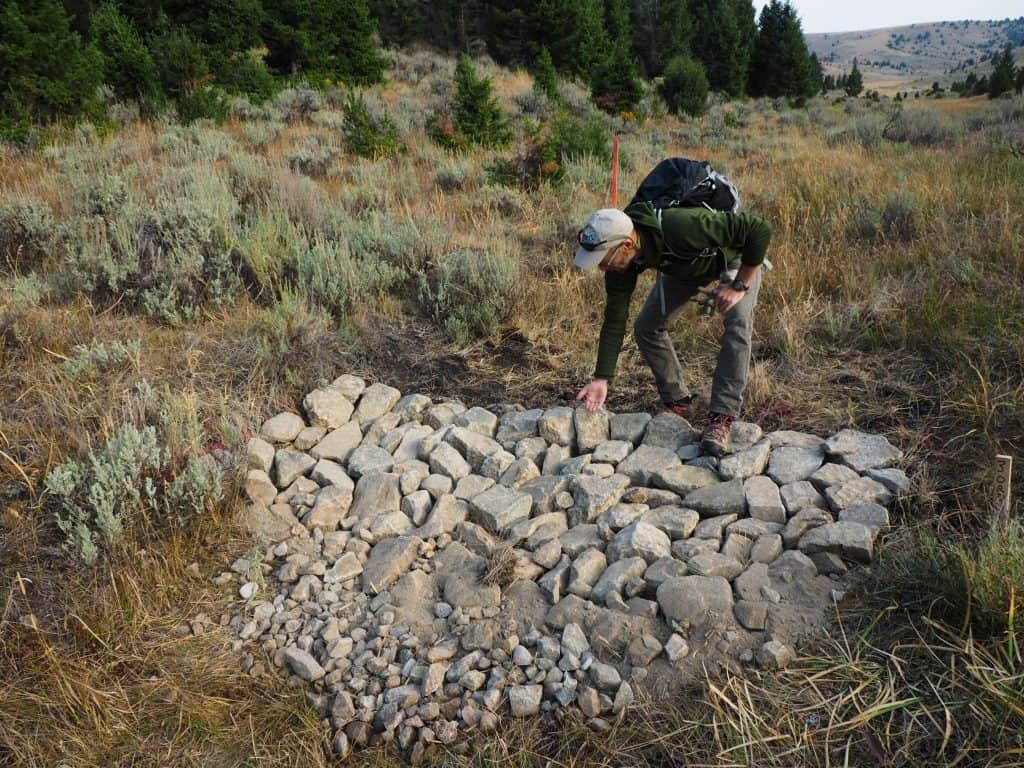
The methods described above are largely low-tech and low-risk – once the plans are drawn up, and rocks are staged in the field, much of the work can be done by hand — and by trained day volunteers.
The ease and cost-effectiveness of their creation doesn’t diminish their impact, however, as these rock puzzle arrangements — or “nature-based solutions”, in more professional terminology — can aid in repairing and preventing head cuts, raising the water table, and increasing native plant cover, among other benefits.
While riparian and wet meadow restoration occur on private and public lands throughout the southwest region, the suite of restoration practices is of high relevance to the Gunnison Basin, its wildlife species, and the ranching community.
Local landowners including the Cranor Ranch and Gunnison Ranchland Conservation Legacy have received funding to apply low-tech mitigation techniques to restore dried meadows, helping them grow hay and feed their cattle.
On the broadest scale, relevant restoration projects promote ecosystem resilience and even mitigate greenhouse gas emissions, as wet meadows store significantly more carbon than arid rangelands.
In Gunnison, riparian restoration ramped up due to efforts from a partnership called the Gunnison Climate Working Group. Beginning in 2009, that coalition identified wet meadows as critical sites to protect and restore in their Climate Change Vulnerability Assessment report.
This listing led The Nature Conservancy (TNC) to spearhead wet meadow restoration efforts beginning in 2012, eventually passing the management of this work to the Upper Gunnison River Water Conservancy District (aka the UGRWCD; environmental work can lead to some rather wicked acronyms).
The UCRWCD is a regional conservation organization which “strives to develop, promote, and implement water conservation, augmentation, and management strategies to protect water resources for the benefit of its citizens, the economy, and the environment.”

A coalition for restoration
Wide-scale wet meadow restoration efforts have required the participation of a diverse group of participants, including local, state, and federal governments and agencies, non-governmental organizations, universities, and the ranching community.
Indispensable to these efforts’ success are the countless volunteer hours put in by Gunnison Valley residents.
Now, as the leaders of the restoration efforts look to amplify their impact, increased attention has been paid to supporting the skilled individuals involved in this work — getting people paid.
Many wet meadow restoration projects have been supported by groups such as the Western Colorado Conservation Corps (WCCC) and USFS Youth Conservation Corps (YCC), as well as interns in land management agencies, including the Bureau of Land Management (BLM) and Colorado Parks and Wildlife (CPW).
More recently, collaborating land management organizations have sought to centralize these efforts into crews focused specifically on working with wet meadows. This summer will see the deployment of such a conservation crew formed and managed by the BLM and UGRWCD.
The crew will be trained and overseen by a number of individuals including Shawn Conner, a restoration specialist with BIO-Logic, INC and Brian Stevens, Fire Management Specialist for the BLM, and other land managers and conservation professionals within the BLM, CPW, USFS, and UGRWCD.
The group’s trainers also include Petar Simic, a 2022 Western M.S. in Ecology alumnus and the habitat restoration and cheatgrass coordinator for Gunnison County, and Cheryl Cwelich, the water resource specialist for UGRWCD — and a fellow Mountaineer graduate.
Finally, the seasonal field supervisor for the crew will be Max Sawyer, who became invested in wet meadow restoration during his time as an undergraduate at Western, and later as a Master’s of Environment Management (MEM) student.
In Sawyer’s full-time role with the BLM, which doubled as his graduate project, he planned and oversaw the building of a wide variety of structures, utilizing both BLM interns and beneficent hordes of local volunteers.
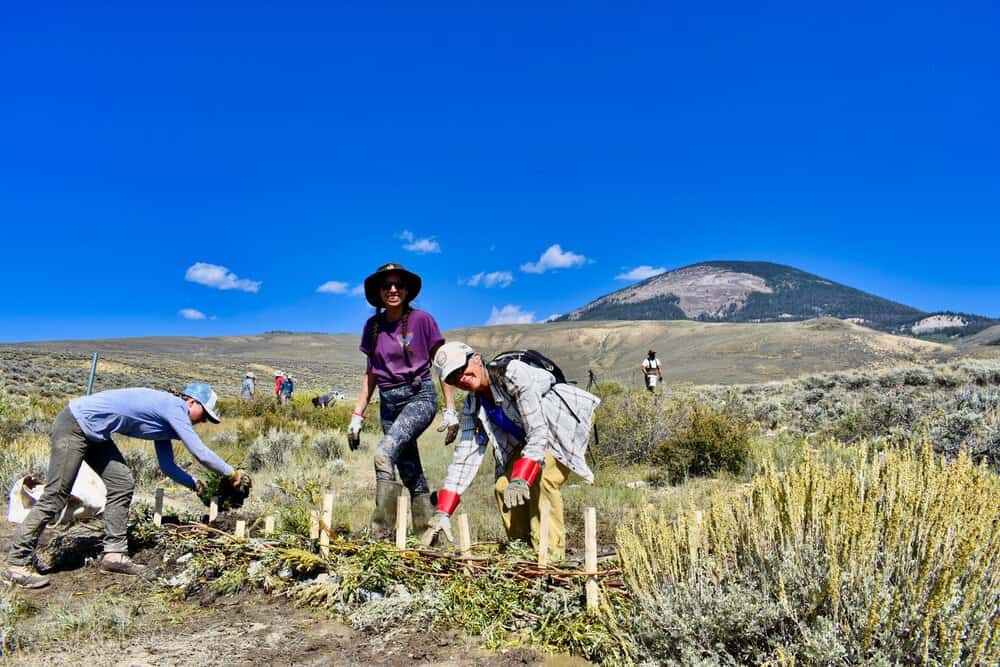
The nascent summer crew is the culmination of years of visioning and planning, and follows in the footsteps of CPW, which formed a wet meadow crew of its own that carried out similar restoration work last summer.
The restoration crew which features both current Western students and recent alumni, will have a specific focus on sagebrush ecosystems.
The group’s work will be funded by the BLM, UGRWCD, U.S. Fish and Wildlife Service (USFWS), and Great Outdoors Colorado (GOCO). That same coalition of agencies, as well as CPW and Western Slope Conservation Corps, will provide training and support resources.
Crew members will be individually paid by different organizations, but will train together in fieldwork, ecology, and restoration techniques, learning over time to read the landscape — and to envision the land as water sees it.
Many of the people leading the charge for wet meadow restoration have themselves benefitted from professionalized job training and development, having mentors in the field, and being able to support themselves financially while undertaking the work they are so passionate about.
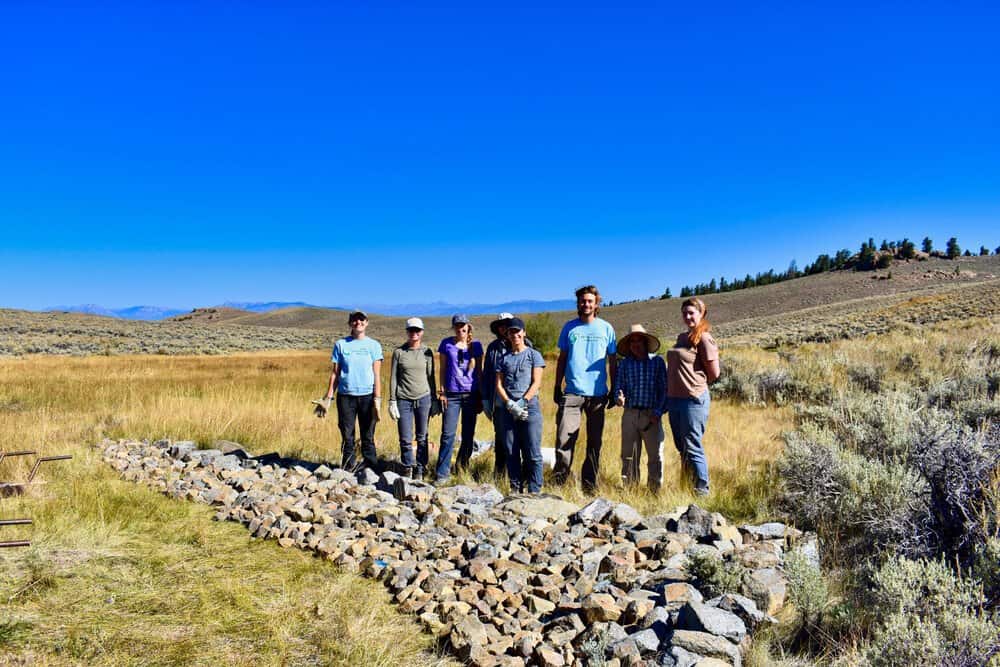
“If you are passionate about it, let us train you!” exclaimed Cwelich, who notes that the restoration crew won’t supplant the work of the region’s hardy volunteers. Instead, the new corps will expand the valley’s total capacity to rejuvenate wet meadows.
Along with building natural rock structures like those detailed above, the crew will be involved in site assessments and prioritization, collecting and distributing native seeds, removing juniper (a woody species that competes, and often overtakes, sagebrush), closing down dirt roads slated for decommissioning, and potentially serving on wildland firefighting assignments.
Getting your feet wet
At a Public Lands Day event last fall, Cheryl Cwelich spoke about returning to school after a ten-year career in accounting. Cwelich had learned more about the risks posed by climate change and decided that she wanted to make a tangible difference in her everyday work.
One allure offered by smaller-scale restoration projects — including many of the natural rock construction projects — is that they allow participants and managers to see immediate benefits, which can be easier to connect with on an emotional level.
Cwelich’s own “meandering path,” (pun intended?) brought her to CPW, and a position that led her to fall in love with water resource management.
Looking ahead to the summer, she’s excited for the wet meadow restoration crew, which she describes as “the next generation of restoration professionals,” to hit the ground running.
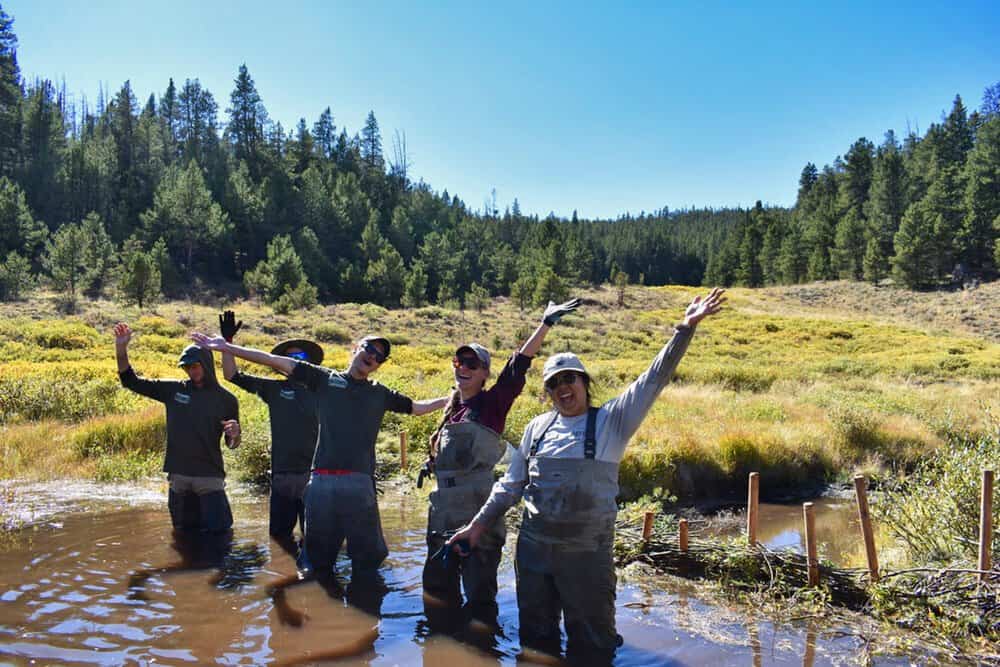
After their season has ended, the crew members will add to the roster of seasoned restoration professionals working in the basin — and around the region — on these critical habitat restoration projects.
Over 250 stream miles in the Gunnison Basin designated as “high-priority” by the Nature Conservancy, based on the following factors: location within potential Gunnison sage-grouse brood-rearing habitat, proximity to a grouse lek, Restoration Potential Index (which measures difference in greenness between wet and dry years), and the extent of the floodplain and riparian vegetation.
Out of these high-priority areas, only 45 or so have been worked on, and there’s an increasing recognition of the importance of “medium-priority” miles, too.
Want to get to work on those miles? While the crew for this summer has already been hired, plenty of volunteer opportunities are about to arise!
To stay updated, check out High Country Conservation Advocates’ website for updates on future volunteer events, and to check out the work that’s been done in previous seasons.

This summer, Wildlands Restoration Volunteers (WRV) is hosting a series of wet meadow restoration events across Colorado:
Greater Sage Grouse in NW Colorado: June 15 – June 18
This is the last of the Craig/NW Colorado wet meadow restoration projects and we will be going back to see all the work that we have done in the past! I have provided an example of the effectiveness of this work below! Come join us as we wrap up this project series and see all the results of our hard work!
Greater Sage Grouse in North Park: July 7– July 9
Come join us as we return to the site of our 2020 Zeedyk implementation work where we will continue to improve Greater Sage Grouse habitat! This is a collaboration of many different partner organizations in a beautiful part of the state, in an area that needs our help!
Lowry Ranch Wet Meadow Restoration: Sept. 30 – Oct 1
Are you looking for some wet meadow restoration close to Denver? The property where this work will be completed is one of the largest continuous tracts of native tall grass prairie in the state and supports wildlife from pronghorn to bald eagles. Come join us as we protect this vital habitat!
City of Boulder Wet Meadow Restoration 2: Oct. 7 – Oct 8
Another Front Range opportunity, come help us bring Zeedyk structures closer to home and support the Cool Boulder climate initiative as we improve habitat, prevent erosion, and support ecosystems that hold and store carbon far into the future!
